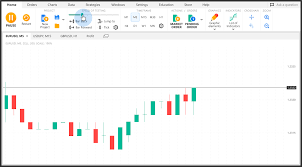
Before investing in Bond ETFs, you should learn what they are and how they work. This type is a great investment vehicle with many advantages and disadvantages. You need to know how they work before you make an investment. By understanding the basics, you will be better equipped for making decisions about which ETFs you should add to your portfolio.
Passive managed funds
Passively managed bond ETFs offer a cost-effective alternative to actively managed bond funds. They offer transparency, predictability, and superior tax-adjusted returns. However, there are risks. Passive managers can lose money if a security's prices fall, but actively managed bonds do well in downturns. These risks must be avoided by passive managers or they will end up over-weighting a stock.
Passively managed bond ETFs have a number of advantages, including low fees and low rates. BND charges 0.02% in management fees and 0.01% on other expenses. It has an expense ratio of 0.033%. AGG is another option that's low-cost. It costs 0.03% per calendar year, and there is no foreign tax. Investors can also get fee waivers.

Fixed-income investment
A bond ETF can be described as an exchange-traded fund. These funds invest in many bonds, such as corporate and government bonds. They can trade on major stock platforms and are similar to a benchmark bond-index index. For a small fee, investors can purchase shares of bond ETFs to gain exposure to the returns of these bonds.
These investments do not guarantee that you will get your principal back. You could lose your principal if you buy the wrong bond fund. CDs offer some protection. FDIC guarantees these investments up until a specified limit. This is usually around $250,000 per individual and $100,000 per account type.
Monthly dividends
Bond ETFs with monthly dividends can help you increase your portfolio income without having to invest a lot. Although most bonds and stocks only pay once a year or quarterly, monthly dividend stocks help smoothen your income stream. However, you should be aware that there are risks and limitations to investing in these funds.
Some exchange-traded fund ETFs pay monthly dividends. It invests in the top 100 dividend-paying stocks globally. This ETF is ideal for investors who are concerned about volatility but want to invest in a less risky asset class. Its geographical diversification means that it can help investors avoid volatile markets. Additionally, it has been making monthly dividend payments for nine year.

Tax benefits
One of the greatest advantages of bond ETFs, is the possibility to invest simultaneously in many securities. These funds usually pay less than individual securities and are more tax efficient. Bond ETFs also have less volatility which makes them more attractive for investors.
ETFs are also able to help you delay capital gains. ETFs can be used to defer capital gains, which is a better option than mutual funds. This is because mutual funds are subject to the Investment Company Act of 1940, which has rules regarding how fund managers distribute their earnings to investors. ETFs are subject to the Investment Company Act of 1940, which governs how fund managers distribute their earnings to investors. However, ETF owners still have to pay taxes for any dividends and interest they receive.
FAQ
How can people lose money in the stock market?
The stock exchange is not a place you can make money selling high and buying cheap. It's a place you lose money by buying and selling high.
The stock market is for those who are willing to take chances. They would like to purchase stocks at low prices, and then sell them at higher prices.
They believe they will gain from the market's volatility. But they need to be careful or they may lose all their investment.
Why is a stock called security?
Security is an investment instrument, whose value is dependent upon another company. It could be issued by a corporation, government, or other entity (e.g. prefer stocks). The issuer promises to pay dividends and repay debt obligations to creditors. Investors may also be entitled to capital return if the value of the underlying asset falls.
What are the benefits of stock ownership?
Stocks are more volatile than bonds. The value of shares that are bankrupted will plummet dramatically.
However, if a company grows, then the share price will rise.
To raise capital, companies often issue new shares. This allows investors to buy more shares in the company.
To borrow money, companies use debt financing. This allows them to get cheap credit that will allow them to grow faster.
Good products are more popular than bad ones. As demand increases, so does the price of the stock.
As long as the company continues producing products that people love, the stock price should not fall.
What are the pros of investing through a Mutual Fund?
-
Low cost - Buying shares directly from a company can be expensive. It is cheaper to buy shares via a mutual fund.
-
Diversification: Most mutual funds have a wide range of securities. One security's value will decrease and others will go up.
-
Professional management - Professional managers ensure that the fund only invests in securities that are relevant to its objectives.
-
Liquidity is a mutual fund that gives you quick access to cash. You can withdraw the money whenever and wherever you want.
-
Tax efficiency- Mutual funds can be tax efficient. You don't need to worry about capital gains and losses until you sell your shares.
-
For buying or selling shares, there are no transaction costs and there are not any commissions.
-
Mutual funds are easy-to-use - they're simple to invest in. You will need a bank accounts and some cash.
-
Flexibility – You can make changes to your holdings whenever you like without paying any additional fees.
-
Access to information – You can access the fund's activities and monitor its performance.
-
Investment advice – you can ask questions to the fund manager and get their answers.
-
Security - you know exactly what kind of security you are holding.
-
Control - You can have full control over the investment decisions made by the fund.
-
Portfolio tracking - You can track the performance over time of your portfolio.
-
Easy withdrawal - it is easy to withdraw funds.
What are the disadvantages of investing with mutual funds?
-
Limited investment opportunities - mutual funds may not offer all investment opportunities.
-
High expense ratio – Brokerage fees, administrative charges and operating costs are just a few of the expenses you will pay for owning a portion of a mutual trust fund. These expenses eat into your returns.
-
Lack of liquidity - many mutual funds do not accept deposits. They must only be purchased in cash. This limit the amount of money that you can invest.
-
Poor customer service - There is no single point where customers can complain about mutual funds. Instead, contact the broker, administrator, or salesperson of the mutual fund.
-
Ridiculous - If the fund is insolvent, you may lose everything.
Can bonds be traded?
Yes, they are. You can trade bonds on exchanges like shares. They have been traded on exchanges for many years.
The main difference between them is that you cannot buy a bond directly from an issuer. You must go through a broker who buys them on your behalf.
This makes buying bonds easier because there are fewer intermediaries involved. This also means that if you want to sell a bond, you must find someone willing to buy it from you.
There are several types of bonds. There are many types of bonds. Some pay regular interest while others don't.
Some pay interest annually, while others pay quarterly. These differences make it easy to compare bonds against each other.
Bonds are a great way to invest money. If you put PS10,000 into a savings account, you'd earn 0.75% per year. The same amount could be invested in a 10-year government bonds to earn 12.5% interest each year.
You could get a higher return if you invested all these investments in a portfolio.
How are securities traded
The stock exchange is a place where investors can buy shares of companies in return for money. Investors can purchase shares of companies to raise capital. Investors then sell these shares back to the company when they decide to profit from owning the company's assets.
Supply and demand determine the price stocks trade on open markets. The price goes up when there are fewer sellers than buyers. Prices fall when there are many buyers.
You can trade stocks in one of two ways.
-
Directly from company
-
Through a broker
Statistics
- Our focus on Main Street investors reflects the fact that American households own $38 trillion worth of equities, more than 59 percent of the U.S. equity market either directly or indirectly through mutual funds, retirement accounts, and other investments. (sec.gov)
- For instance, an individual or entity that owns 100,000 shares of a company with one million outstanding shares would have a 10% ownership stake. (investopedia.com)
- Ratchet down that 10% if you don't yet have a healthy emergency fund and 10% to 15% of your income funneled into a retirement savings account. (nerdwallet.com)
- Individuals with very limited financial experience are either terrified by horror stories of average investors losing 50% of their portfolio value or are beguiled by "hot tips" that bear the promise of huge rewards but seldom pay off. (investopedia.com)
External Links
How To
How to trade in the Stock Market
Stock trading can be described as the buying and selling of stocks, bonds or commodities, currency, derivatives, or other assets. Trading is French for "trading", which means someone who buys or sells. Traders buy and sell securities in order to make money through the difference between what they pay and what they receive. This is the oldest type of financial investment.
There are many ways you can invest in the stock exchange. There are three types of investing: active (passive), and hybrid (active). Passive investors only watch their investments grow. Actively traded investors seek out winning companies and make money from them. Hybrid investor combine these two approaches.
Passive investing can be done by index funds that track large indices like S&P 500 and Dow Jones Industrial Average. This type of investing is very popular as it allows you the opportunity to reap the benefits and not have to worry about the risks. You can just relax and let your investments do the work.
Active investing involves selecting companies and studying their performance. Active investors look at earnings growth, return-on-equity, debt ratios P/E ratios cash flow, book price, dividend payout, management team, history of share prices, etc. They will then decide whether or no to buy shares in the company. They will purchase shares if they believe the company is undervalued and wait for the price to rise. They will wait for the price of the stock to fall if they believe the company has too much value.
Hybrid investing is a combination of passive and active investing. Hybrid investing is a combination of active and passive investing. You may choose to track multiple stocks in a fund, but you want to also select several companies. You would then put a portion of your portfolio in a passively managed fund, and another part in a group of actively managed funds.